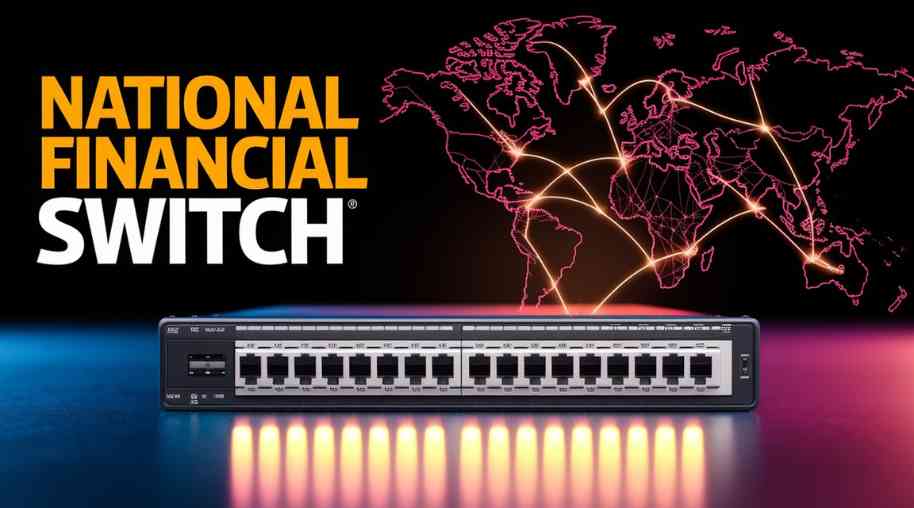NFS Full Form-National Financial Switch
by Shashi Gaherwar
0 1007
National Financial Switch (NFS): India's ATM Network, Features, and Role in Digital Banking
Introduction
The National Financial Switch (NFS) is India's largest interbank ATM network, enabling seamless electronic transactions across multiple banks. Managed by the National Payments Corporation of India (NPCI), NFS plays a crucial role in digital banking by facilitating interoperability between different banks' ATMs, ensuring customers can access cash and financial services conveniently across the country.

Launched to enhance the efficiency and security of ATM transactions, the National Financial Switch has revolutionized electronic banking in India by providing a centralized, cost-effective infrastructure for ATM withdrawals, balance inquiries, and other financial services.
History and Evolution of the National Financial Switch
The National Financial Switch was introduced by the Institute for Development and Research in Banking Technology (IDRBT) in 2004. Initially, it aimed to connect the ATMs of multiple banks to provide a common transaction network. Over time, due to the increasing need for a scalable and robust financial infrastructure, the responsibility for managing NFS was transferred to NPCI in 2009.
Since its inception, NFS has expanded significantly, making ATM services more accessible and promoting the financial inclusion agenda of the Indian government.
Key Features of the National Financial Switch (NFS)
NFS offers several features that make it a cornerstone of India's financial infrastructure:
1. Interoperability Across ATMs
a. Customers of any member bank can use their debit/credit cards at ATMs of other banks seamlessly.
2. Wide Network Coverage
a. More than 250 member banks and 300,000+ ATMs are connected through NFS, making it India's largest ATM network.
3. Secure and Reliable Transactions
a. Transactions processed through NFS are encrypted and secured using advanced security protocols.
4. Multiple Financial Services
a. Apart from cash withdrawals, customers can use ATMs for balance inquiries, mini statements, PIN changes, and fund transfers.
5. Cost-Effective Operations
a. Banks benefit from a centralized switching system, reducing operational costs and improving efficiency.
6. Support for Digital Banking
a. NFS is integrated with UPI (Unified Payments Interface) and IMPS (Immediate Payment Service) to support digital payments and transactions.
7. 24/7 Availability
a. The switch operates round the clock, ensuring continuous transaction processing for users across India.
How Does the National Financial Switch Work?
The National Financial Switch acts as a centralized switch that enables interbank ATM transactions. Here’s how it functions:
1. Customer Initiates an ATM Transaction
a. A cardholder uses an ATM of a different bank to withdraw cash or perform another transaction.
2. Transaction Request Sent to NFS
a. The ATM network sends a request to the National Financial Switch for processing.
3. NFS Communicates with the Card-Issuing Bank
a. NFS routes the transaction request to the customer’s bank to verify account details and balance availability.
4. Transaction Authorization
a. If approved, NFS confirms the transaction and the ATM dispenses cash (or completes another requested service).
5. Confirmation and Settlement
a. The transaction details are recorded, and the amount is settled between the banks involved.
Importance of the National Financial Switch in India's Banking System
The National Financial Switch plays a vital role in enhancing banking accessibility, efficiency, and financial inclusion in India. Some of its key benefits include:
1. Increased ATM Accessibility
• With NFS, customers can use any bank’s ATM without worrying about network restrictions.
2. Financial Inclusion
• NFS enables customers in rural and semi-urban areas to access banking services through ATMs and micro-ATMs.
3. Cost-Effective Banking Operations
• Banks save operational costs as NFS provides a centralized ATM switching service, eliminating the need for multiple independent networks.
4. Enhancing Digital Banking Infrastructure
• NFS supports not only ATM transactions but also enables digital payment solutions, contributing to India’s cashless economy initiative.
5. Reduction in Cash Handling Costs
• As more people use electronic transactions instead of cash, the cost of cash management for banks is significantly reduced.
Challenges and Future Developments in NFS
Challenges
Despite its success, the National Financial Switch faces certain challenges:
• Cybersecurity Risks: As digital transactions grow, protecting NFS from cyber threats and fraud is a priority.
• ATM Operational Costs: Banks bear maintenance costs for ATMs, and fee regulations impact revenue generation.
• Interoperability with Emerging Payment Systems: As digital wallets and fintech solutions expand, integrating them with NFS remains a challenge.
Future Developments
To further strengthen India's digital banking framework, NPCI and regulatory bodies are working on:
• Advanced security measures such as biometric authentication and AI-driven fraud detection.
• Integration with global payment systems to enhance international transactions.
• Expansion of micro-ATM networks to improve banking access in remote locations.
The National Financial Switch (NFS) is a cornerstone of India’s banking and financial infrastructure, enabling seamless interbank ATM transactions and supporting the nation's shift towards a digital economy. By providing secure, cost-effective, and accessible financial services, NFS has significantly enhanced financial inclusion and digital banking adoption.

Share:








Comments
Waiting for your comments